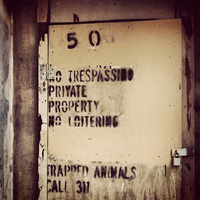Today, Monday February 7th, I was to finish widening the road, to get out there with shovel and wheel barrow and dig for six hours. It was supposed to be a clear day. Last night the stars in the cedar-pierced sky shone a rare bright alongside the crescent of moon.
It rained all morning, so here I write, having promised The Captain’s wife that I would not ditch in the rain anymore.
This portion of the Pacific Northwest is known to me only from Christmas until March 1 for some few years. I will attempt to describe what I see as a rain forest, but may not qualify as one according to the superstition of Science. If I have erred, priests if science and lay didacts, do not bother forgiving me, but burn me at the stake. At least that is not fake like your science.
My life here is dominated by trees and rain, so I call it a rain forest.
The soil is a lot rockier than the Mid Atlantic Piedmont where I grew up, though not nearly as rocky as the Rocky Mountains. The dominant rocks are large, black boulders that are preferred by moss over other types of stones. In the yard here sits some dozen 1 to 2 ton boulders, covered with moss that serve as nice seats when dry. This black stone breaks like glass and can be used for making road bed base. The second type of stone is a hard, usually rounded, heavy sandstone. One of these stones is 10 feet high, I don’t know how deep, and 12 feet across, and is exposed by a utility road cut.
There are grassy fields and patches in places only due to man’s constant use and the grazing of animals. If let go, the pastures and yards are overtaken by black berry and scotch broom, then the evergreen saplings grow quickly and choke these things out, killing the blackberries which are very thorny invaders, and keeping the scotch broom under their shade to a small size and pleasing wiry form, where it waxes hideous in the sunlight.
Under the mature trees, ferns typically grow in profusion about two feet in span and about a foot or two high. Moss and various ground vines make a pleasing forest floor that is interspersed by dry beds of pine needles.
Game trails are supported by roots of bunched trees and often made by dead-falls, with the big trees decaying so fast that one can walk on them as they melt like ocher splinters into the soft ground. Moss clothes rocks and timber fence posts and the trunks of trees in the interior of the forest. As the trees reach for the sun, they let their lower branches die and these are colonized by moss and sometimes treebeard.
The dominant tree is the cedar, a soaring, quick growing evergreen with droopy palms rather than needles. The trunk flares at the base. Some old stomps are 15 feet across. The cedars at dusk and at night with a flashlight, trail their weeping fronds spookily in the dark. The firest floor is dominated by cedar stumps and deadfalls, with numerous young cedars often springing from an old trunk. A bunch of three cedars growing out of the same stump outside my door here, featured one with a U hump at the bottom, reaching out from the small hill and then up.
The dominant leafy tree is the alder, what I called a “dirty aspen” when I first saw it. It comes in before the evergreens on neglected trails and logging roads. So in winter, one can see where an old logging road is on the side of a mountain by the thin band of brown alder stands between the evergreens.
When digging in these Cascadian foothills, where I have now cut some 200 yards of ditch by hand over three years, one will always cut into buried wood, old deadfalls under sediment, dead roods of deadfalls, as often as striking rocks. The soil thus has a collapse prone and uneven feel. Some times the moss seems to be a loose carpet atop an intermittently dented floor. The soil is sandier than Mid Atlantic and has more clay that the Rockies.
Cedars sway majesticall and ominously in the heavy winds and come down on the edge of stands and when isolated with frightening regularity in the soft, wet soil. In the Rockies, deadfalls will have their roots bound up around up to a ton of boulders. But in the Cascades, the roots are rotted rather than petrified and there is more soil than rock bound up in them, much of the soil very young organic decay, with cedar often growing out of rotten cedar.
The animals I see regularly are ravens, red-tail hawks, humming birds, woodpeckers and small black sparrows. I see few gulls, crows—none in murders—or black birds, magpies, robins or starlings. Owls hoot at night in pairs.
Scat I have seen includes, from most to least: elk, coyote, deer, cougar.
Tracks I have seen have followed the same proportions as above.
It is now 2:00 P.M. and the sun has finally shone—it will go down behind the mountain at 3:45.
I should get the shovel.











what about the HUGE slugs? Largest I have ever seen. What young boy would not use his trusty BB gun to target shoot at. What about the Crawdads that lace the many streams of the only TEMPERATE rain forest in the world.